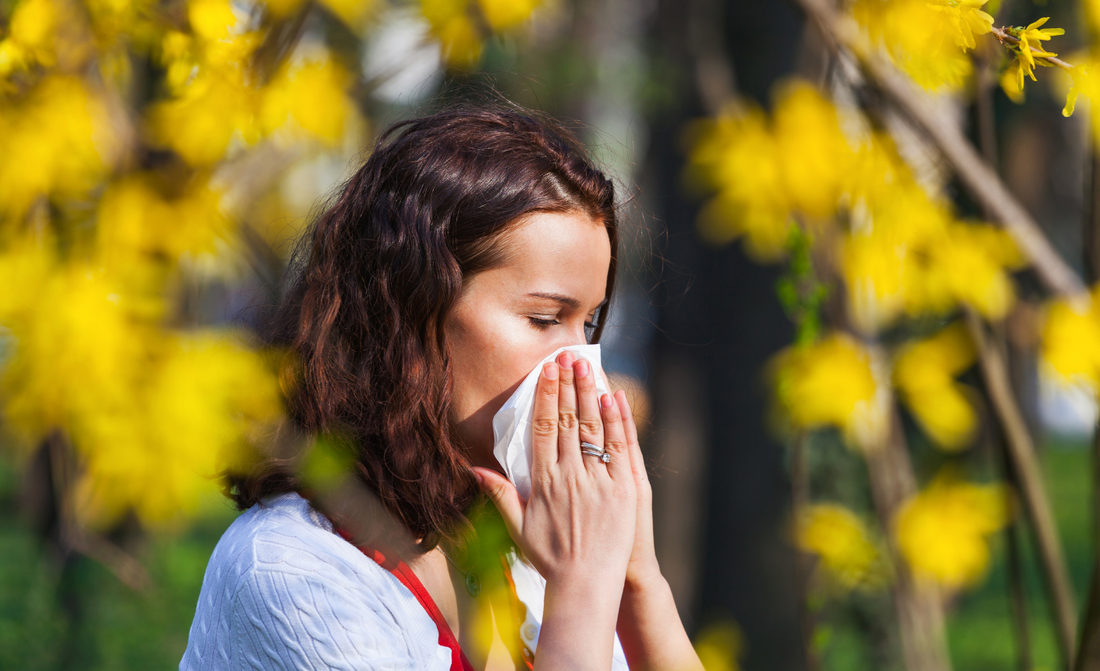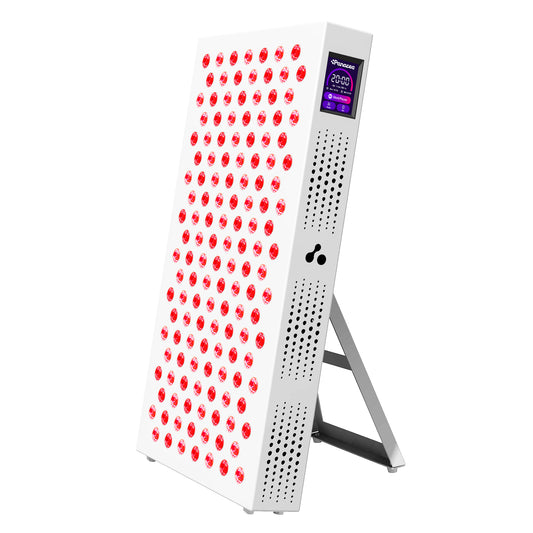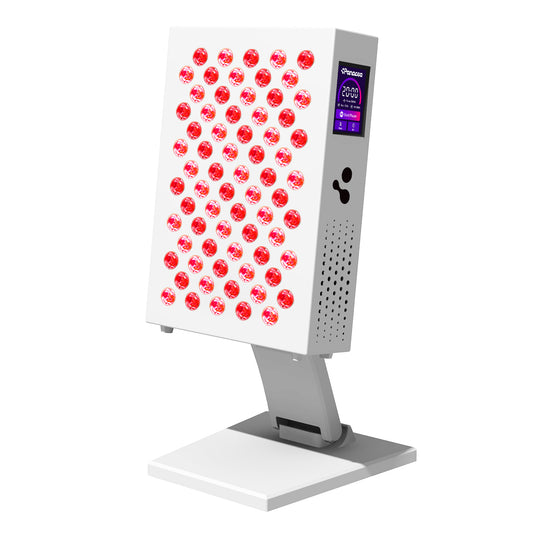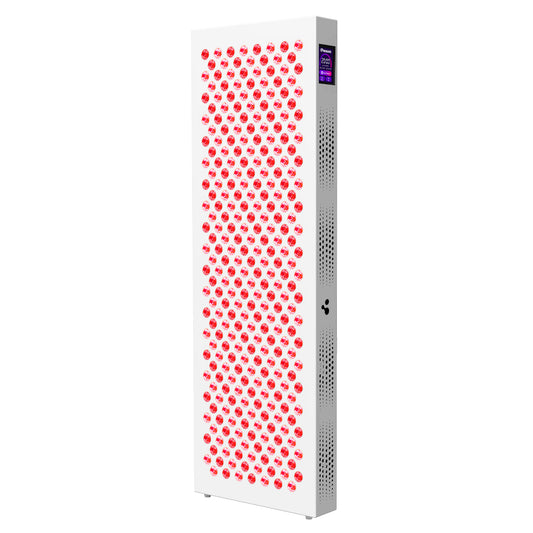
Red light therapy for allergies
Natural lighting during spring
Every spring, millions of people struggle with the unpleasant consequences of seasonal allergies such as hay fever. Sneezing, a blocked nose, itchy eyes and fatigue can seriously disrupt daily life. Traditional treatments such as antihistamines or nasal sprays do not work for everyone and sometimes have side effects. More and more people are therefore looking for a natural, non-medicinal alternative.
Red light therapy , or photobiomodulation therapy, is one such alternative – safe, effective and backed by science.
What is red light therapy?
Red light therapy works with precise wavelengths of red and near-infrared light that penetrate deep into the body. These light waves stimulate mitochondria – the energy factories of our cells – which causes more ATP (cell energy) to be produced. This process supports the natural regeneration of cells, reduces inflammation and can influence the immune system in a balanced way.
For allergic complaints this means: less swelling, less histamine release, improved blood circulation and faster recovery of irritated mucous membranes or skin.
How does red light therapy help with allergies?
Inflammation plays a central role in allergic reactions. The body overreacts to pollen or dust particles and activates an immune response including histamine, cytokines and mucus production.
Red light therapy can influence this process in several ways:
- Anti-inflammatory: reduces swelling and irritation in the airways and skin
- Immunomodulatory: helps to slow down overreactions of the immune system
- Recovery promoting: accelerates healing of irritated or damaged mucous membranes
- Soothing: provides relief from itching, shortness of breath or a blocked nose
The operation per wavelength
Panacea Light Therapy uses six specific therapeutic wavelengths: 630 nm, 660 nm, 810 nm, 850 nm, 940 nm and 1060 nm . Each wavelength has a unique effect:
630 nm – Skin calming
This wavelength works on the superficial layers of the skin and is effective for allergic skin reactions such as eczema, redness or itching.
660 nm – Nasal mucosa and sinuses
Penetrates deeper than 630 nm and is particularly effective for inflamed nasal mucosa. Reduces swelling and improves breathing in hay fever.
810 nm – Airways and lung tissue
Works deep into the bronchi and can reduce inflammation in the airways. Relevant for allergic asthma or chronic cough.
850 nm – Lymphatic system and immune function
Helps to remove inflammatory substances via the lymphatic system. Supports the balance in the immune system.
940 nm – Deep-acting anti-inflammatory action
Penetrates into muscle and chest tissue and helps with tightness or pressure in the chest caused by allergies.
1060 nm – Overall energy balance and cognitive support
This wavelength is being studied for its effects on cerebral blood flow and neuroinflammation. Supportive for fatigue and "brain fog" caused by allergies.
Scientific basis
Several studies show that red light therapy is effective for allergic complaints:
-
Rhinolight therapy (light therapy through the nasal cavity) is effective in hay fever patients. Swelling decreases, symptoms diminish.
Source: Sherali, N. (2018) - A recent review on airway inflammation describes that red light affects cytokines such as IL-5 and eotaxin – key factors in allergic responses.
Source: Hanusrichterova & Mokry, 2024 – American Journal of Physiology - Research into the application of red light to the skin has shown clear improvements in allergic eczema and contact allergies.
Source: Bella, Z. (2010) – University of Szeged - Further research shows that red light can inhibit histamine activity and reduce mucus production in the airways.
Source: Li et al., 2020 – bioRxiv
Who is this interesting for?
This form of therapy is suitable for people who suffer from:
- Hay fever or pollen allergy
- Allergic asthma
- Chronic sinus problems
- Allergic skin complaints such as eczema or hives
- Fatigue or mental exhaustion due to allergies
Red light therapy offers a safe, natural and painless method to relieve allergy symptoms without medication. Thanks to the versatility of the wavelengths used, Panacea Light Therapy can address both superficial symptoms and deeper causes.







